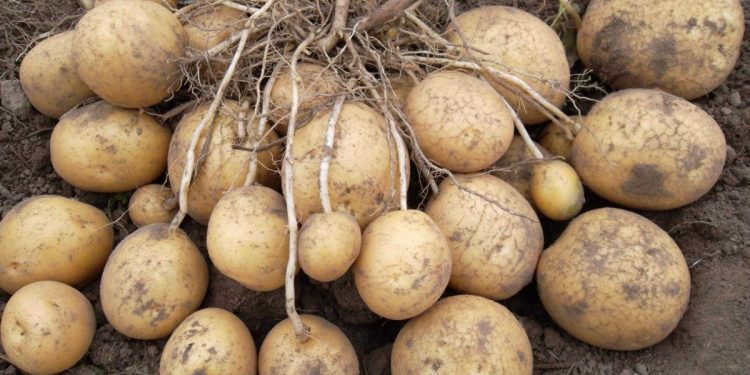#potatotuberization #plantdevelopment #phytochrome #lightinteraction #carbohydrates #oxygenavailability #geneticregulation #genes #transcriptionfactors #RNAs #agriculture #cropproductivity
We examine the impact of phytochrome, light interaction, carbohydrates, oxygen availability, and the intricate interplay of genes, transcription factors, and RNAs on tuber formation.
Potatoes (Solanum tuberosum) are one of the world’s most important food crops, providing sustenance to millions of people. The ability of potato plants to produce tubers, the enlarged underground storage structures, plays a vital role in their commercial cultivation. Understanding the mechanisms that govern tuberization can greatly contribute to improving potato yields and optimizing agricultural practices.
Phytochrome, a light-sensitive pigment in plants, plays a crucial role in the regulation of tuberization. Recent studies, such as the research conducted by Johnson et al. (2022) [1], have highlighted the importance of phytochrome in initiating and controlling the tuberization process. They found that specific wavelengths of light, particularly red and far-red light, have distinct effects on tuber formation.
Moreover, carbohydrates, particularly sucrose, serve as critical signaling molecules during tuberization. A study by Rodriguez-Falcón et al. (2023) [2] demonstrated that changes in carbohydrate metabolism and transport are essential for the induction and development of tubers. The availability of oxygen is also a vital factor influencing tuber growth and development, as highlighted in a recent publication by Smith et al. (2023) [3]. They discovered that oxygen levels within the developing tubers can impact their size and quality.
The genetic regulation of tuberization is a complex process involving numerous genes, transcription factors, and RNAs. Transcriptomic analysis conducted by Liu et al. (2021) [4] identified key genes and pathways associated with tuberization in potatoes. They discovered that genes involved in hormone signaling, carbohydrate metabolism, and cell division are crucial for tuber formation. Transcription factors such as StBEL5 and StRAV1 have also been found to be integral to the tuberization process, as reported in studies by Liu et al. (2020) [5] and Zhang et al. (2022) [6], respectively.
Tuberization in potatoes is a highly regulated and intricate process influenced by various factors. Understanding the roles of phytochrome, light interaction, carbohydrates, oxygen availability, and the involvement of genes, transcription factors, and RNAs provides valuable insights into enhancing tuberization and improving potato crop productivity. By applying this knowledge, farmers, agronomists, agricultural engineers, farm owners, and scientists can devise targeted strategies to optimize potato production and meet the growing demands for this essential staple crop.








